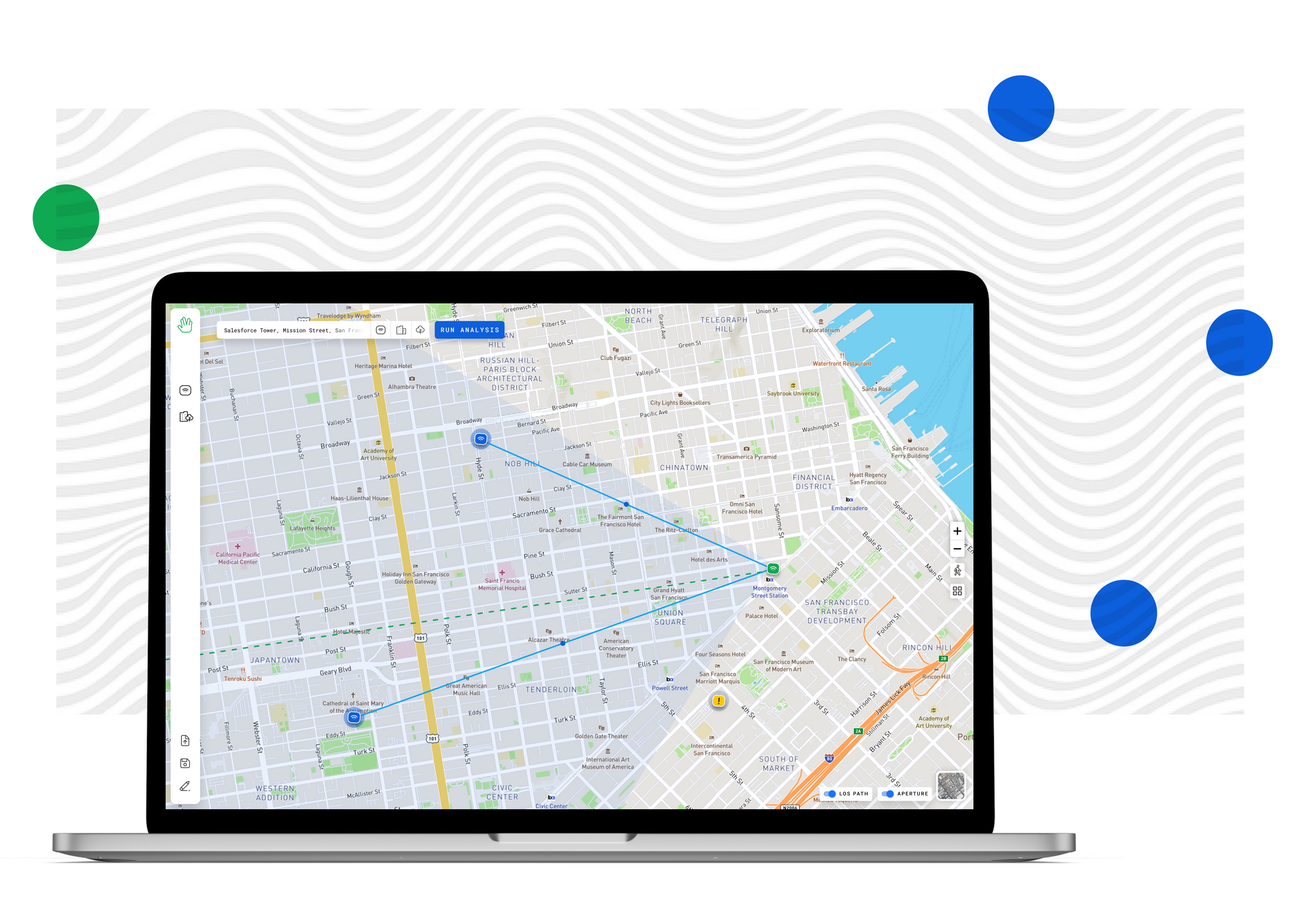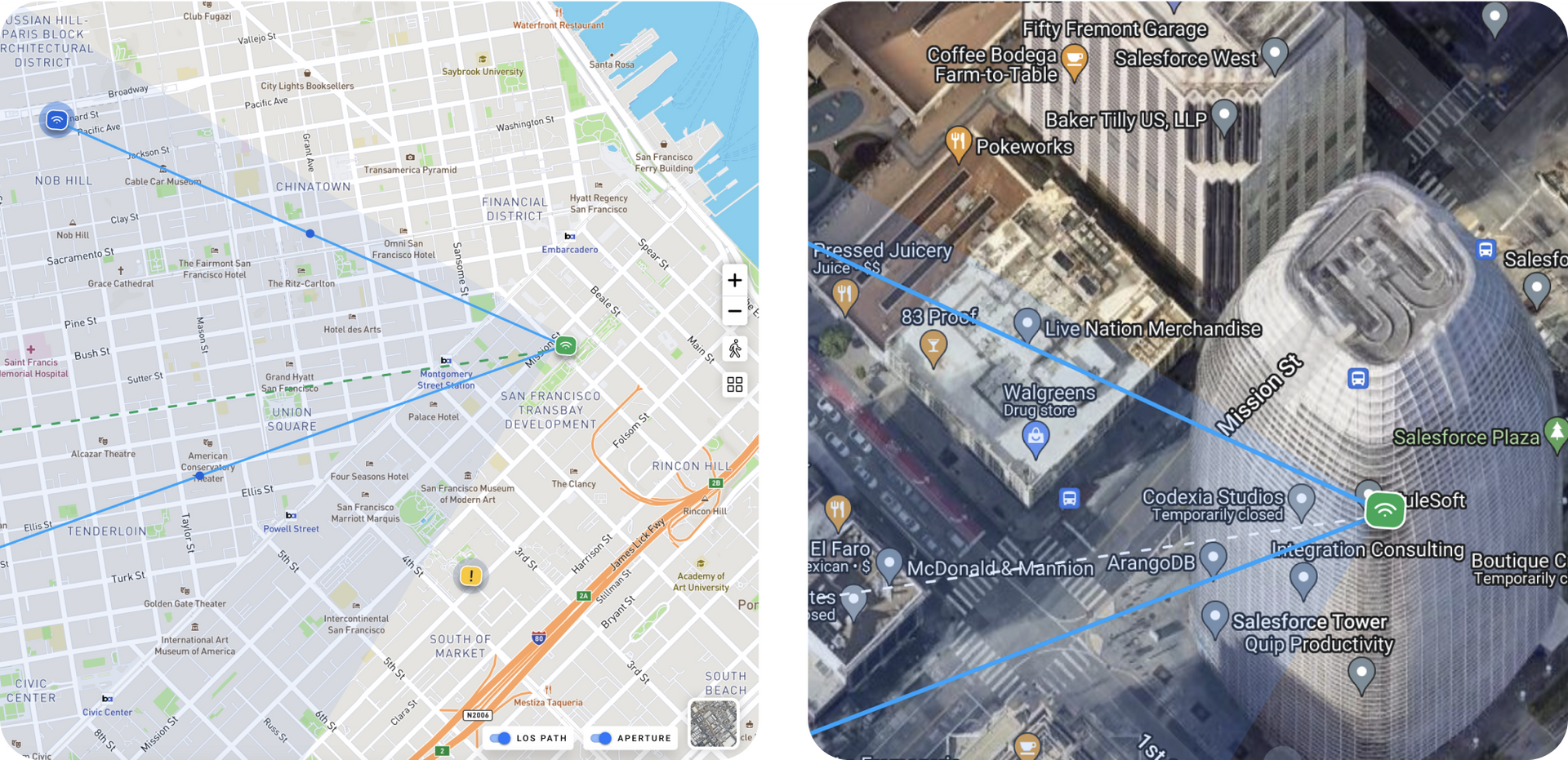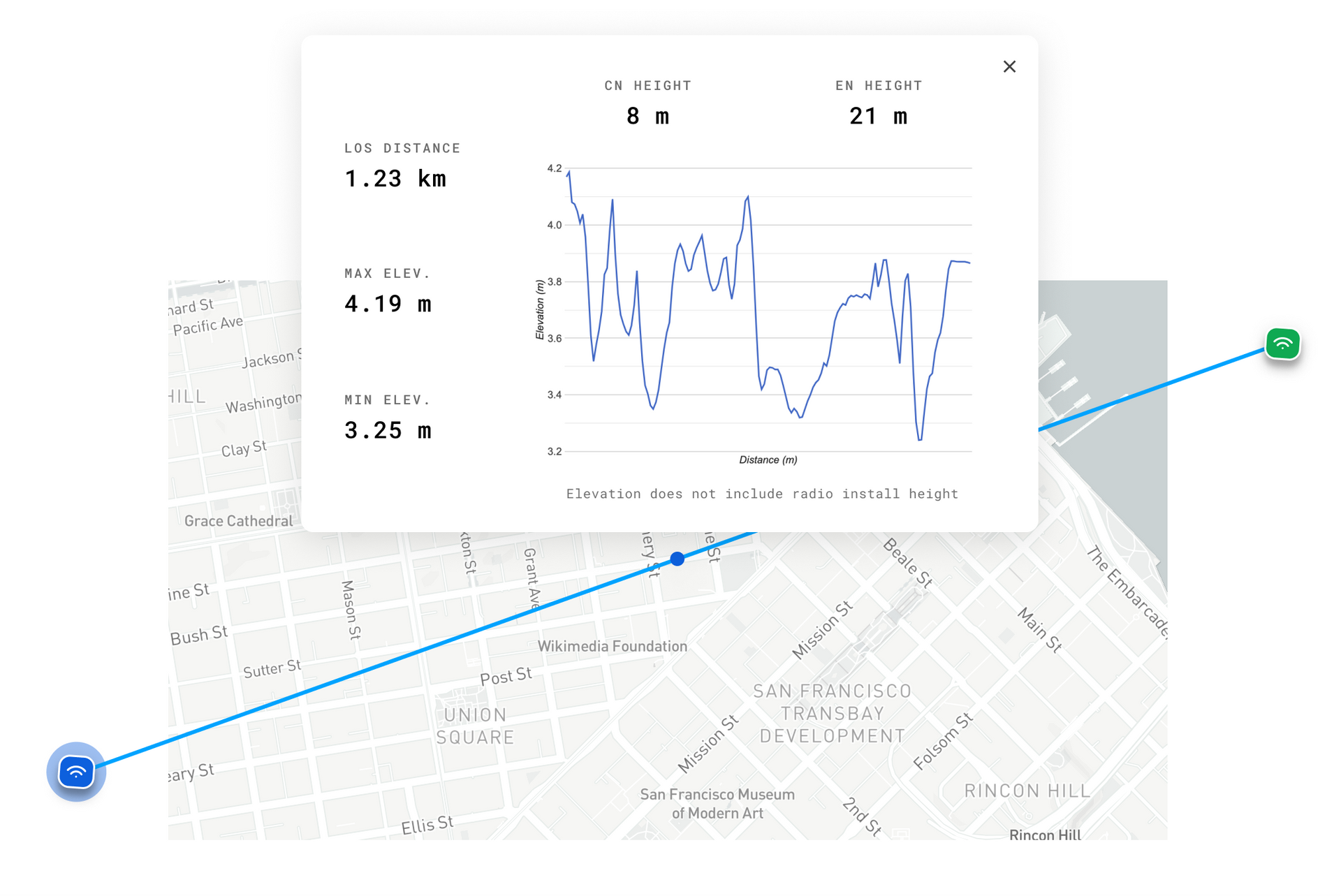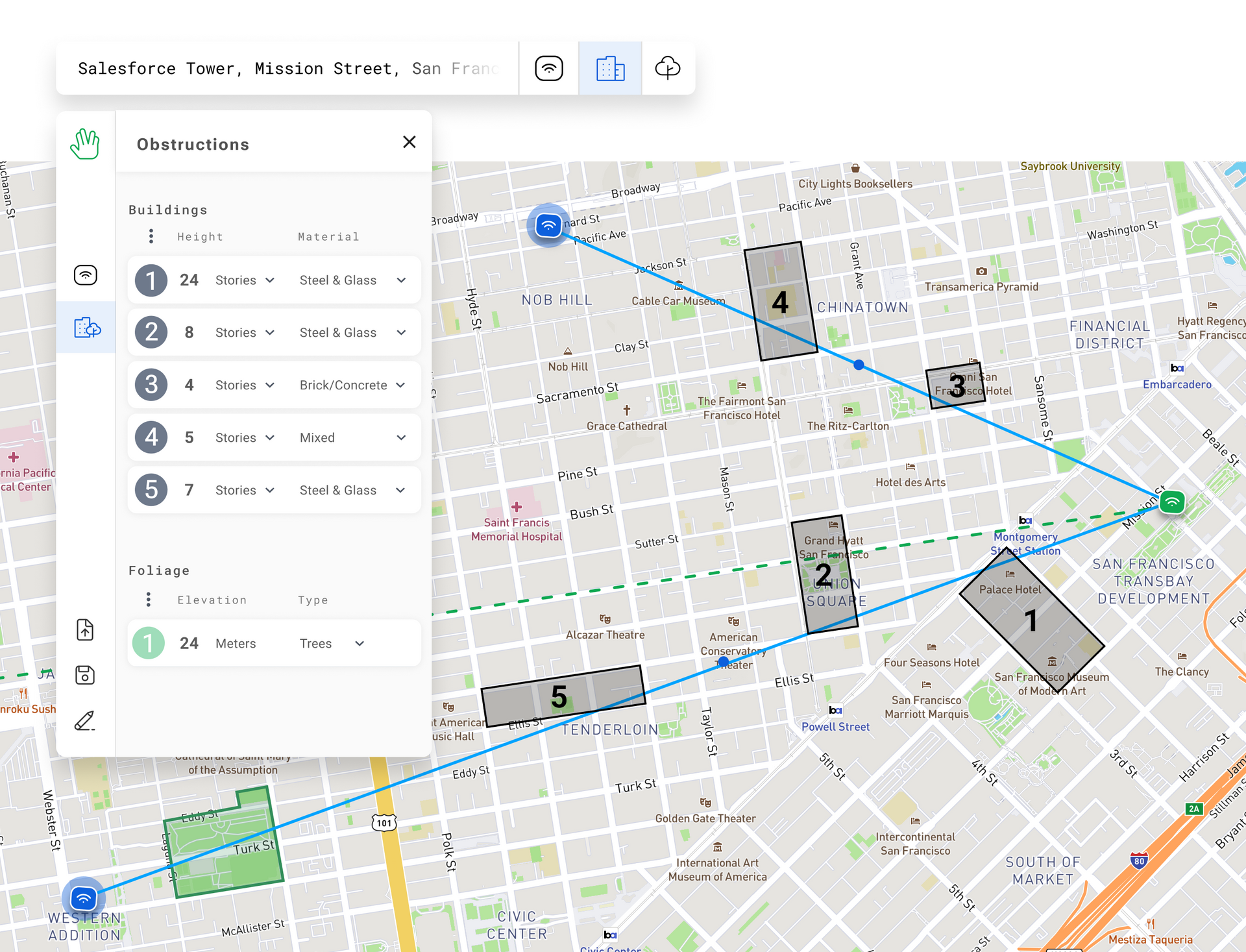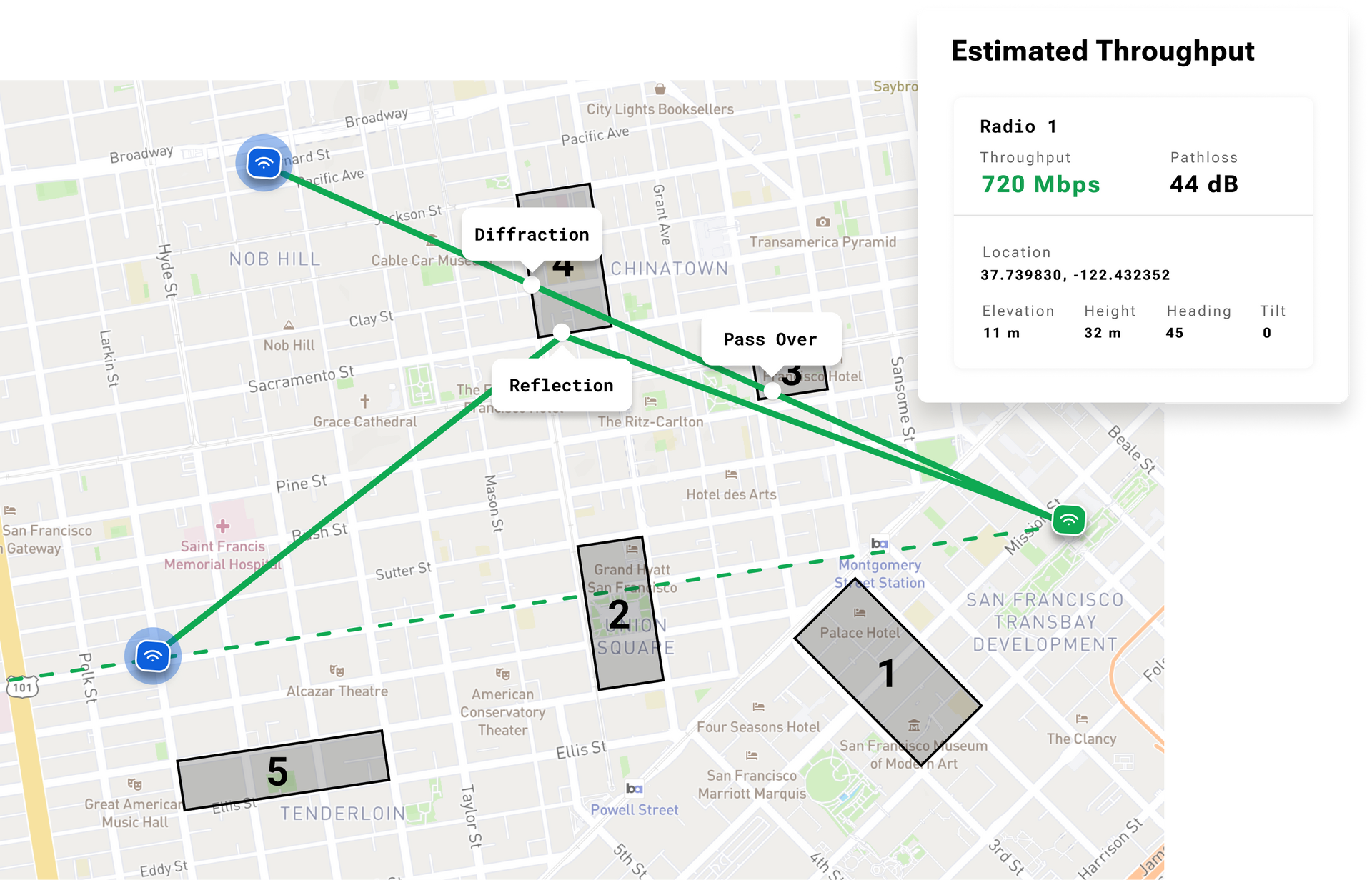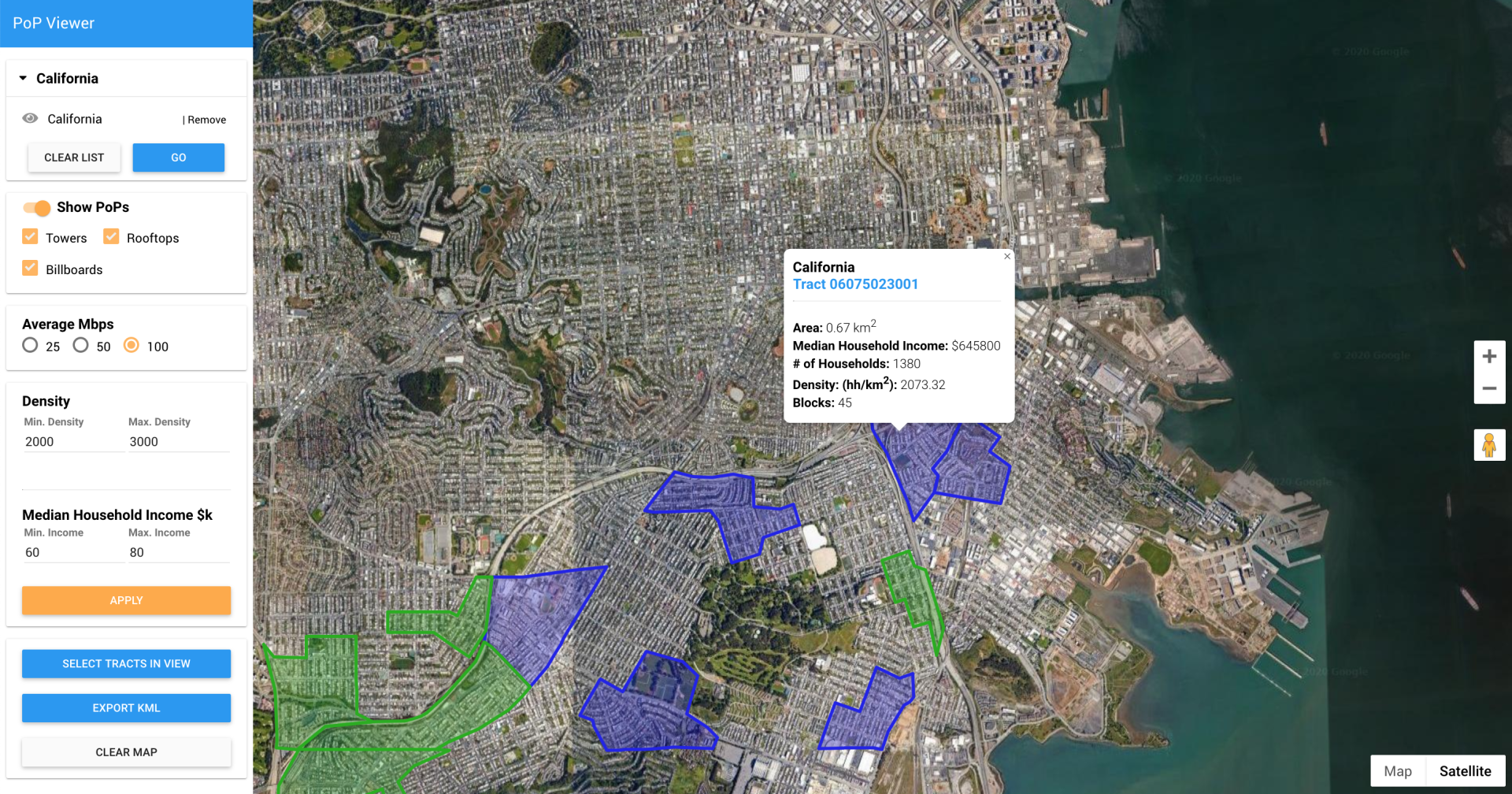Wireless Deployment Planner
A substantial cost to deploying a broadband network in a new metro is the planning stage, which in a conventional deployment plan will consist of significant man-hours spent surveying, field testing, and troubleshooting. This wireless link planner was built specifically to make the job of a network planning engineer easier—a fast way to check link feasibility and immediately see the outcomes of adjustments to radio height, location, tilt, and heading before sending anyone into the field for a site survey.
Instead of wrestling with spreadsheets or complex equations, this web-based tool wraps predictive models and basic raytracing into a clear, visual workflow. It estimates path loss based on environmental factors (morphology, natural obstructions, etc.) and install parameters (height, orientation, etc.), letting engineers drag, adjust, and test in seconds.
In other words, it took the equations that the rocket scientists gave me, like this one:
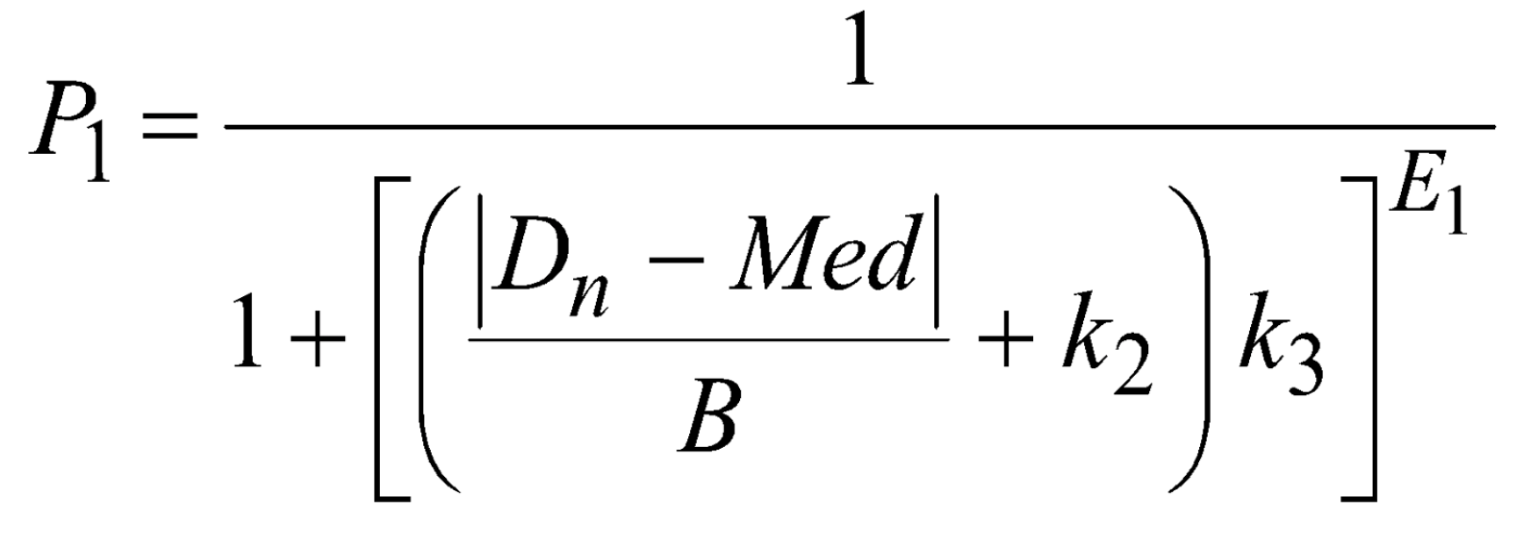
And turned them into a simple, visual click-and-drag workflow that a single network engineer can use to easily conduct preliminary evaluations right from their chair.
Simple drawing tools
The app uses formulas tailored to whichever morphology you've selected (dense urban, urban, rural, etc.) when setting the transmitting radio. However, if there are notably tall buildings or dense natural features like trees in the line-of-sight path, custom obstructions can be easily drawn on the map with a simple point & click and these obstructions will be included in the calculations.
Fire away!
Once the scene has been set, click "run" to let the app take it from there, tracing all the rays and crunching all the numbers. Once the dust has settled, based on the parameters set and obstructions added, a throughput estimate is provided for each radio that successfully makes a link. The map also shows potential obstruction contact points and wave propagation events.
